Gas carrier owners often consider both UV ballast water treatment and electrochlorination – and have similar goals in making the choice.
When safety is such an important concern aboard gas carriers, it makes sense that safeguarding the vessel and its crew are in focus when choosing a ballast water treatment system. UV treatment avoids key risks that are posed by electrochlorination, as shown in this infographic.
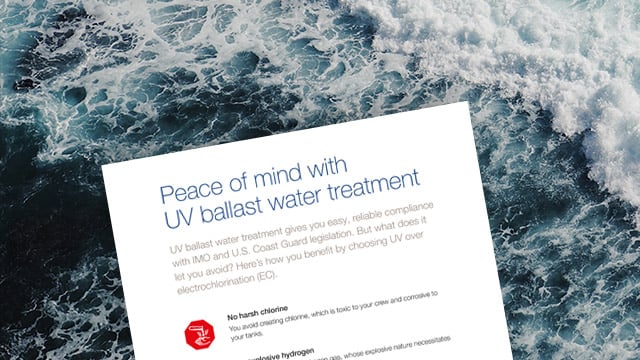
Today’s UV systems compete easily with electrochlorination systems in terms of OPEX factors like energy consumption. But there are also CAPEX costs for electrochlorination that may not be evident in a supplier’s offer. This infographic shows the many different savings offered by UV treatment.
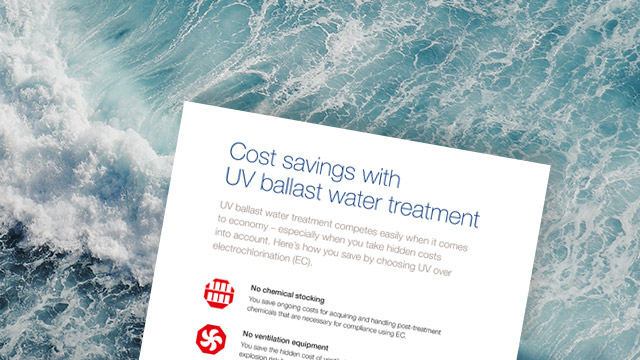
A wide range of system advantages and dedicated technical solutions make PureBallast 3 the ideal choice for ballast water treatment on gas carriers.
In addition to having safety in focus, many gas carriers operate in frigid or low-salinity waters. Effective UV treatment with PureBallast 3 means operation without the corrosion risk, chemicals and hazardous by-products associated with electrochlorination. But it also means high-efficiency operation wherever your gas carrier trades, since UV treatment is unaffected by water temperature or salinity.
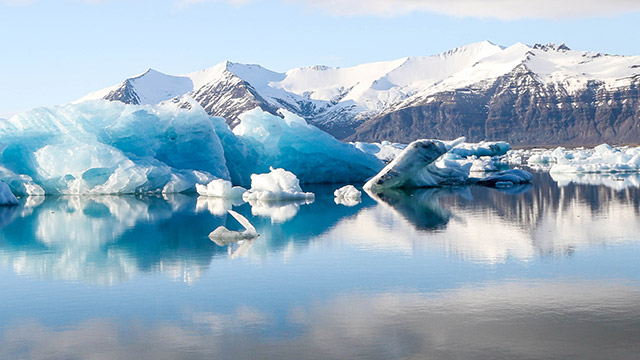
PureBallast 3 has high energy efficiency and performs without chemical consumables, which means its operating costs are lower than those of electrochlorination systems. Likewise, there are no hidden costs – such as the ventilation equipment, supplemental heating and additional tanks for high-salinity water that electrochlorination systems may require but seldom include.
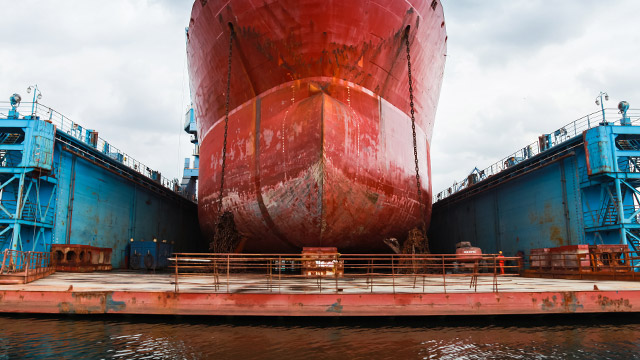
Gas carriers differ greatly in their size and ballast water flow needs, but PureBallast 3 offers solutions for them all. PureBallast 3 Compact Flex, which is flexibly built with loose components easy retrofitting, is the ideal solution for most. But PureBallast 3 can also be configured on a skid for smaller flows – or handle flows of 3000 m3/h with a single system and a small footprint.
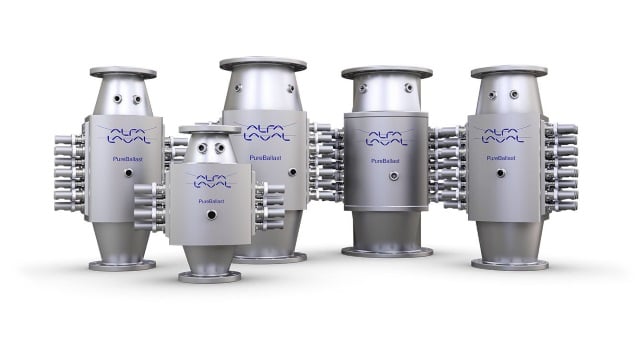
PureBallast 3 is one of few solutions with IMO revised G8 type approval, which means systems contracted today can be installed for global operation even after the new requirements take effect on 28 October 2020. Likewise, its U.S. Coast Guard (USCG) type approval offers a minimized holding time of just 2.5 hours – which is only needed when crossing between Captain of the Port Zones. That can make a difference in coastwise service.
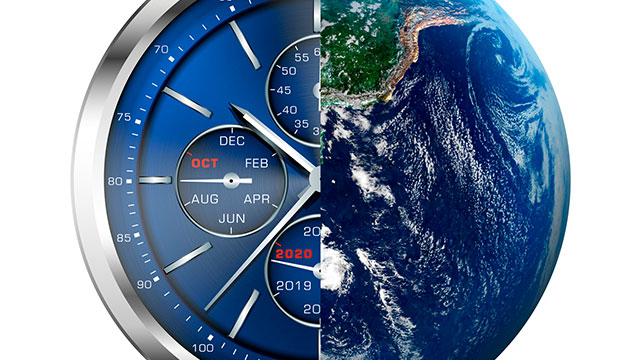
Installing a ballast water treatment system is only the first step in staying compliant. The regulations demand a whole range of annual service actions. Even so, one package is all that you need. With the PureBallast Compliance Service Package, our experts take responsibility for your PureBallast system’s health.
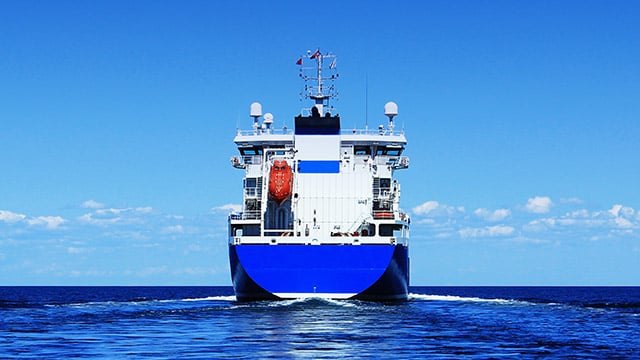
The following links and downloads may be useful as you consider a PureBallast 3 solution for your gas carrier.
Learn more about PureBallast 3 Std, which handles flows up to 3000 m3/h (6000 m3/h with dual systems) and has the broadest installation parameters.
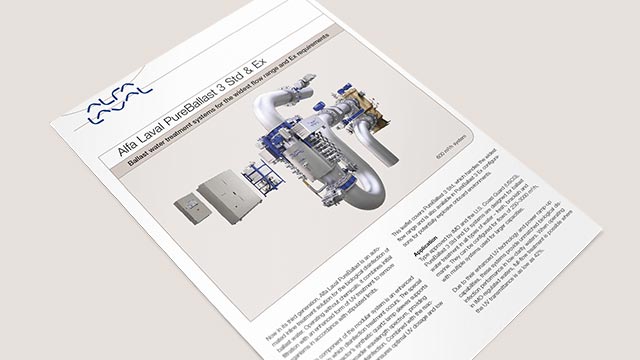
Learn more about PureBallast 3 Compact Flex, the ideal solution for most vessels with ballast water flows up to 1000 m3/h. It arrives as loose components for complete installation freedom and the market’s smallest footprint.
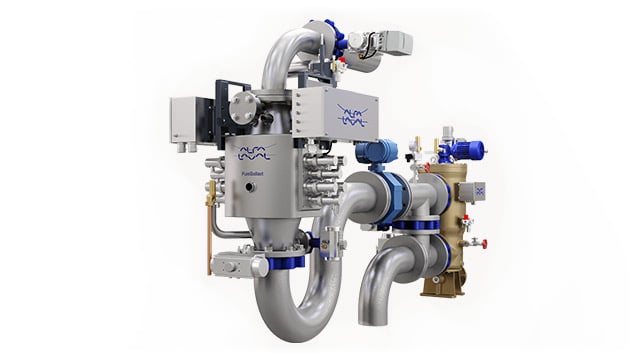
Learn more about PureBallast 3 Compact, a convenient solution for smaller ballast water flows. It integrates the system into a plug-and-play module with a small footprint.
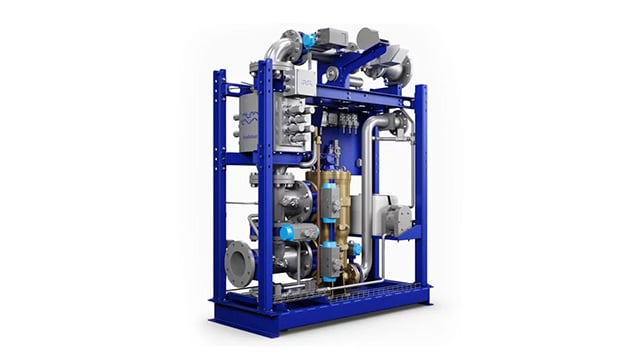
Find out why UV ballast water treatment today is often a smarter solution than electrochlorination, even for the largest ballast water flows.
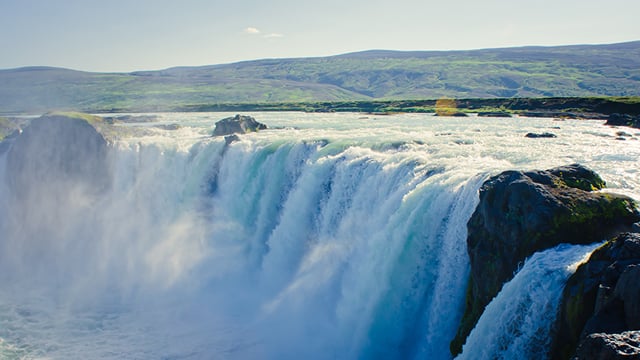
Discover why Alfa Laval is the reliable choice for equipping your gas carriers with ballast water treatment systems.
Let’s talk about the specific challenges you face in ballast water treatment. With our many years of experience, we can guide you to the right PureBallast 3 solution for your gas carrier.